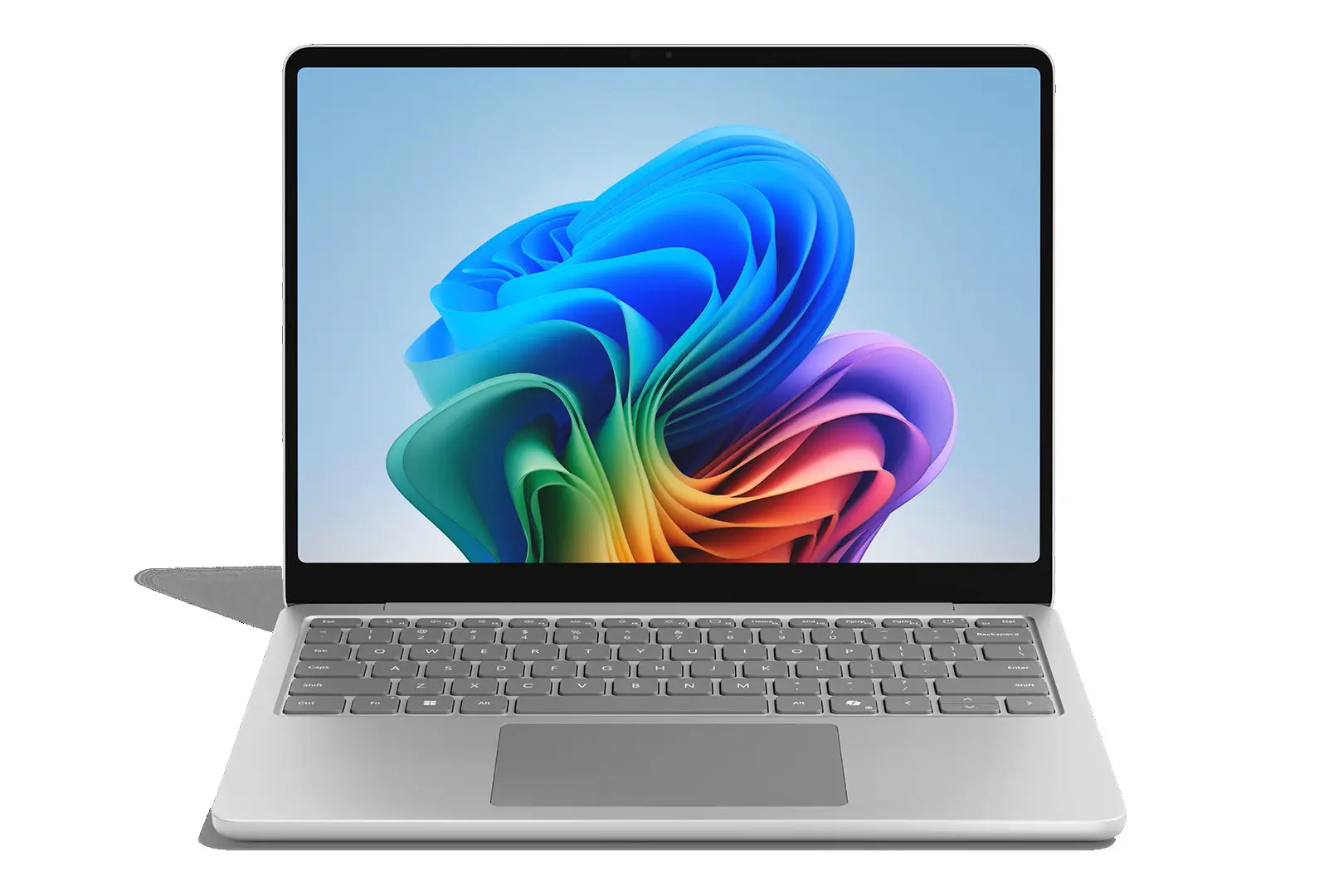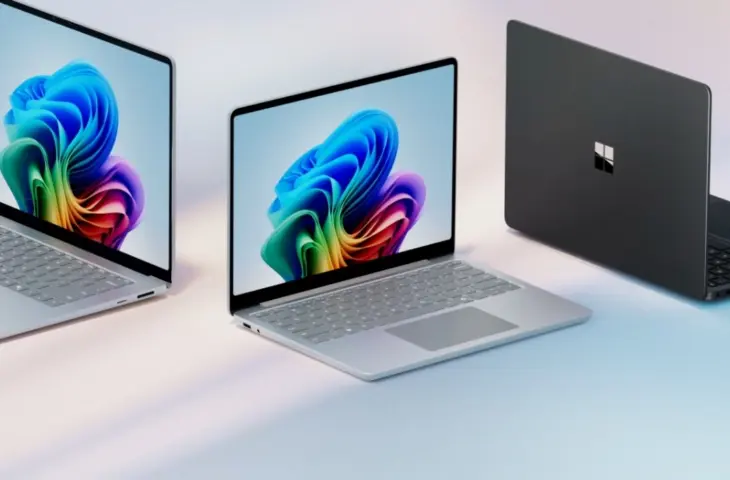The Microsoft Surface Laptop 13 is an excellent option for those who want to keep up with Copilot+ without breaking the bank, but it won’t be winning any awards.
Last year, Microsoft kicked off the self-invented Copilot+ era. They did so in style with the Surface Laptop 7: a device that impressed because it was simply a good laptop, not because of Copilot. The new Surface Laptop 13 serves more as a broadening of the lineup rather than a full-fledged successor.
With an affordable entry price (908 euros excluding VAT), a light and portable design, and once again excellent battery life, the Surface Laptop 13 has many strengths. If you’re content with supermarket salmon, this laptop will be enough. If you’re only satisfied with the most delicate piece of that salmon, look elsewhere.
Stain Magnet
Microsoft has considered hybrid workers who commute between office and home with their laptops. The 13-inch screen is packaged as compactly as possible to keep the total weight at a pleasant 1.2 kilograms. The keyboard and touchpad work excellently, making the Surface Laptop 13 a nice companion for working on the train.
However, those who move around a lot will quickly notice that the frame attracts stains. The slightest object that’s in your backpack leaves its marks. A laptop bag might be worth considering to keep the Surface Laptop 13 looking as good as new.
Farewell Surface Connect
The notable absence is the Surface Connect port. We applaud this, as the thing was a monstrosity. You can finally take your Surface charger to the nearest recycling point. An HDMI port is also missing. Under pressure from European regulations, Microsoft resolutely opts for USB-C, but it doesn’t include a charger in the box.

Microsoft makes a small mistake in the placement of the USB ports. The two USB-C ports are on the same side, meaning you can only connect an external screen on that side. A port on each side would have been more practical. Furthermore, there’s one USB-A port and a headphone jack.
Mediocre Screen
The laptop’s IPS screen is good enough for office work, but it’s not designed to show off. This is evident from the specifications: a resolution of 1,920 x 1,280 and a 60 Hz refresh rate don’t excite us much. The moderate brightness (392 nits) and especially the glossy screen finish make the display almost unreadable in direct sunlight.
The same can be said about the webcam, speakers, and microphone. The webcam captures you well, although you look a bit pale. Incoming and outgoing audio are of adequate quality for video meetings, but the sound from the speakers lacks depth.
We do compliment Microsoft on the color accuracy. An average DeltaE of 2.4 will almost make graphic professionals drool. The laptop doesn’t see life through rose-colored glasses, but even here, a deviation of 4.5 DeltaE remains within limits. It’s a shame that the laptop isn’t built for heavy graphic workloads.
Endurance over Power
For the Surface Laptop 13, Microsoft again opts for a Qualcomm Snapdragon X processor: the Plus variant, that is. This is where this model differs from the Surface Laptop 7, which gets to join the Elite. Microsoft has thus clearly established the hierarchy between the two Surface laptops.
However, with a Snapdragon X Plus processor, 16 GB RAM, and 512 GB SSD storage, you’re not lacking anything. This is a more than capable work laptop. Per individual core, the chip carries less weight than similar processors from Intel and AMD, compared to tested configurations from HP and MSI. With all cores combined, the Plus variant can measure up to an Intel Core Ultra 5 or 7 from the 200V series.

Built for Lighter Work
The Microsoft Surface Laptop 13 handles office work without any effort. There’s no better test than a benchmark that measures performance on Microsoft applications like Word and PowerPoint. The scores show that the laptop isn’t a powerhouse, but it feels at home in its natural habitat.

Most office applications run smoothly. More and more apps and software programs are starting to see ARM as a full-fledged alternative to x86, but compatibility issues with software or drivers can’t be completely ruled out. For example, there are still many benchmarks that don’t work on an ARM laptop.
You’d better spare the Surface Laptop 13 heavy workloads like video editing. The built-in 16 GB RAM is also tight for those who want to run robust creative software suites. For such applications, you’ll need to look for a more powerful laptop.

NPU at the Ready
Microsoft is of course also focusing on the Copilot+ label. The Snapdragon Plus processor delivers 45 TOPS of NPU power. However, the NPU is mostly waiting for work. You can try out the infamous Recall function or entrust background blurring in Teams to the NPU. Even Copilot depends on the cloud and benefits more from a good internet connection than from an NPU.
Excellent Battery Condition
The Microsoft’s big trump card is its excellent battery life. The Qualcomm Snapdragon proves itself time and time again. Whether you have the Plus or Elite variant, your laptop can keep going. Even with a limited battery capacity of 50 Wh, the Surface Laptop 13 easily makes it to the end of the workday without an interim charge.
In an endurance test, Qualcomm once again outperforms Intel and AMD. The Surface Laptop lasts more than 18 hours on a single charge in two tests.

Charging with USB-C
The Surface Laptop 13 finally gets rid of the Surface charger: a choice to be applauded on multiple fronts. The charging capacity (45 W) and speed increase, and no one will miss the hassle of getting the connector into the port. The graph below shows a clear difference in charging times between the Surface 13 and Surface 7, if we use Microsofts charger for the latter.

Laptop for Beginners, not for Veterans
The Microsoft Surface Laptop 13 shows that an ‘AI PC’ doesn’t have to be extremely expensive. The device offers adequate performance for average office work, and especially the excellent battery life is a reason to consider this device. If you’re quickly looking for a new Windows 11 laptop, this Surface presents itself as a good entry-level model.
The seasoned IT veteran might not be entirely satisfied with this laptop. Pure computing power is not where the Surface Laptop 13 excels. Within the Microsoft camp, the Surface Laptop 7 has a bit more to offer. A look at the competition brings forward the Lenovo X9 Aura and Dell Pro 13 Premium, among others, although those models are also a lot pricier.
Tested configuration: Microsoft Surface Laptop 13 2095 – Qualcomm Snapdragon X1-45, 16 GB RAM, 512 GB SSD, 13 inch glossy IPS screen (1,920 x 1,280 pixels), Windows 11 Home – 1,007 euros excl. VAT.
.pro’s
- Light and compact
- Excellent battery life
- Adequate office performance
- Almost perfect color calibration
- No Surface Connect port
.contra’s
- Stain-prone casing
- Screen unreadable in sunlight
- Not for heavy workloads
- Little variety in port selection
